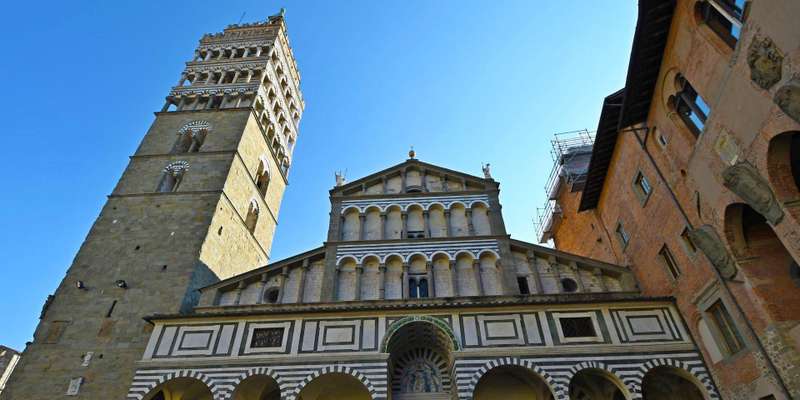- Home
- Useful Tips
- Visiting Pistoia's Cathedral...
Many travelers overlook Pistoia's Cathedral crypt, missing one of Tuscany's most atmospheric medieval sites. While 78% of visitors flock to Florence's crowded attractions, few realize this underground treasure lies just 40 minutes away. The crypt presents unique challenges – dim lighting, uneven steps, and sparse signage often leave visitors confused about what they're seeing. Without proper context, you might walk past 12th-century fresco fragments or miss the significance of ancient Roman foundations beneath your feet. Locals whisper about the crypt's eerie beauty, but practical information remains scarce for non-Italian speakers. This creates unnecessary stress for history lovers who want to appreciate the site's layers of history, from early Christian burials to Renaissance modifications. The crypt's mysterious ambiance deserves more than a hurried glance between cathedral visits.


Navigating the crypt's challenging entrance and layout
Finding the crypt entrance tests even seasoned travelers. Unlike prominent cathedral features, the doorway blends into the right aisle's shadows near the Chapel of St. James. Watch for a modest sign reading 'Cripta di San Jacopo' – the descent begins through a narrow 15th-century staircase. The uneven stone steps demand careful footing, especially if you're visiting after admiring the cathedral's gleaming silver altar. Once below, the space opens into a mesmerizing forest of squat columns and low vaults. Lighting remains intentionally subdued to protect the fresco fragments, so allow your eyes several minutes to adjust. The left wall reveals the most dramatic discoveries – traces of 14th-century murals showing saintly figures emerging from the gloom. Move clockwise to follow the architectural evolution from heavy Romanesque pillars to more delicate Gothic arches near the apse.
Decoding the crypt's layered history like a local expert
What appears as a dim underground chamber actually holds Pistoia's complete spiritual timeline. Local historians identify three distinct construction phases in the brickwork patterns alone. The oldest section (directly beneath the altar) incorporates recycled Roman stones – run your fingers along the grooves where ancient masons shaped them. Don't miss the peculiar column capital near the central aisle, carved with pagan motifs that early Christians repurposed. While information panels exist in Italian, the true stories emerge from subtle details. Notice how 13th-century builders raised the floor level, partially burying earlier frescoes now visible at knee height. These depict martyrdom scenes once illuminated by devotional candles. The rear section reveals Renaissance modifications when the space served as a workshop for cathedral artisans – look for chisel marks on the walls and a rare surviving charcoal sketch of a proposed altar design.
Timing your visit for optimal atmosphere and access
The crypt's magic intensifies at specific moments most tourists miss. Arrive just before 11 AM when sunlight filters through the cathedral's high windows, casting ethereal patterns on the ancient walls via ventilation grates. Weekday mornings offer solitude, while Saturday afternoons often bring haunting organ rehearsals from above. Locals know the caretaker usually takes breaks between 1:30-2:30 PM, creating opportunities for undisturbed contemplation. If visiting in summer, the crypt provides refreshing coolness when surface temperatures soar. November through February reveals an extra dimension – moisture in the air makes the stonework's mineral veins glisten under the subtle lighting. Should you encounter one of Pistoia's sudden rainstorms, listen for the mesmerizing sound of water trickling through original Roman drainage channels beneath the floor.
Combining your crypt visit with hidden nearby treasures
The crypt experience extends beyond its walls when you know where to look. Exit through the cathedral's side door to discover the 'Piazza del Duomo underground' – a little-known network of medieval tunnels mirroring the crypt's dimensions below the square. While not always open to the public, the adjacent Bishop's Palace sometimes offers guided access to interconnected subterranean spaces. Across the piazza, the Baptistery's basement contains architectural fragments from the crypt's various renovations. For a perfect post-visit reflection spot, follow Via del Lastrone to Antica Cantina, a wine cellar built into Roman foundations similar to the crypt's. Their Vernaccia di San Gimignano makes an ideal companion to the medieval atmosphere you've just absorbed. Artisans at nearby Laboratorio Giudici still use techniques perfected by the stonemasons who maintained the crypt centuries ago.
